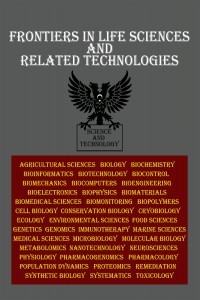Investigating the relationship between COVID-19 and total oxidative stress and antioxidant capacity in individuals
Investigating the relationship between COVID-19 and total oxidative stress and antioxidant capacity in individuals
Antioxidant, cell damage, COVID-19, oxidative stress,
___
- Aykac, K., Ozsurekci, Y., Yayla, B. C. C., Gurlevik, S. L., Oygar, P. D., Bolu, N. B., ... & Ceyhan, M. (2021). Oxidant and antioxidant balance in patients with COVID-19. Pediatric Pulmonology, 56(9), 2803-2810.
- Bakadia, B. M., Boni, B. O. O., Ahmed, A. A. Q., & Yang, G. (2021). The impact of oxidative stress damage induced by the environmental stressors on COVID-19. Life Sciences, 264, 118653.
- Baloch, S., Baloch, M. A., Zheng, T., & Pei, X. (2020). The coronavirus disease 2019 (COVID-19) pandemic. The Tohoku Journal of Experimental Medicine, 250(4), 271-278.
- Celik, D., & Kose, S. (2020). Erişkinlerde COVID-19: Klinik bulgular. Tepecik Eğitim ve Araştırma Hastanesi Dergisi, 30, 43-48.
- Cecchini, R., & Cecchini, A. L. (2020). SARS-CoV-2 infection pathogenesis is related to oxidative stress as a response to aggression. Medical Hypotheses, 143, 110102.
- Chernyak, B. V., Popova, E. N., Prikhodko, A. S., Grebenchikov, O. A., Zinovkina, L. A., & Zinovkin, R. A. (2020). COVID-19 and oxidative stress. Biochemistry, 85(12), 1543-1553.
- Dagli, S. N., Ozgocer, T., Celik, H., Taskin, S., Taskin, A., & Ceylan, M. R. (2022). Long-term investigation of total oxidant and antioxidant levels in COVID-19 patients. Journal of Harran University Medical Faculty, 19(1), 176-183.
- Delgado-Roche, L., & Mesta, F. (2020). Oxidative stress as key player in severe acute respiratory syndrome coronavirus (SARS-CoV) infection. Archives of Medical Research, 51(5), 384-387.
- Derouiche, S. (2020). Oxidative stress associated with SARS-Cov-2 (COVID-19) increases the severity of the lung disease-a systematic review. Journal of Infectious Diseases and Epidemiology, 6(3), 121-126.
- Erel O. (2005). A new automated colorimetric method for measuring total oxidant status. Clinical Biochemistry, 38(12), 1103-1111.
- Feng, J., Yang, Y., Wang, D., Tang, J., Xie, G., & Fan, L. (2017). Relationship between oxidative stress in patients with HBV-induced liver disease and HBV genotype/drug-resistant mutation. Frontiers in Laboratory Medicine, 1(4), 211-216.
- Genc, B. N. (2020). Critical management of COVID-19 pandemic in Turkey. Frontiers in Life Sciences and Related Technologies, 1(2), 69-73.
- Kim, H. J., Kim, C. H., Ryu, J. H., Kim, M. J., Park, C. Y., Lee, J. M., Holtzman, M. J., & Yoon, J. H. (2013). Reactive oxygen species induce antiviral innate immune response through IFN-λ regulation in human nasal epithelial cells. American Journal of Respiratory Cell and Molecular Biology, 49(5), 855-865.
- Kocyigit, A. (2020). Is high dose ıntravenous vitamin C safe to use in SARS-CoV-2 treatment? Bezmialem Science, 8(3), 126-130.
- Laforge, M., Elbim, C., Frère, C., Hémadi, M., Massaad, C., Nuss, P., Benoliel, J. J., & Becker, C. (2020). Tissue damage from neutrophil-induced oxidative stress in COVID-19. Nature Reviews. Immunology, 20(9), 515-516.
- Lin, C. W., Lin, K. H., Hsieh, T. H., Shiu, S. Y., & Li, J. Y. (2006). Severe acute respiratory syndrome coronavirus 3C-like protease-induced apoptosis. FEMS Immunology and Medical Microbiology, 46(3), 375-380.
- Muhammad, Y., Kani, Y. A., Iliya, S., Muhammad, J. B., Binji, A., El-Fulaty Ahmad, A., Kabir, M. B., Umar Bindawa, K., & Ahmed, A. (2021). Deficiency of antioxidants and increased oxidative stress in COVID-19 patients: A cross-sectional comparative study in Jigawa, Northwestern Nigeria. SAGE Open Medicine, 9, 2050312121991246.
- Narayanan, A., Amaya, M., Voss, K., Chung, M., Benedict, A., Sampey, G., Kehn-Hall, K., Luchini, A., Liotta, L., Bailey, C., Kumar, A., Bavari, S., Hakami, R. M., & Kashanchi, F. (2014). Reactive oxygen species activate NFκB (p65) and p53 and induce apoptosis in RVFV infected liver cells. Virology, 449, 270-286.
- Qin, C., Zhou, L., Hu, Z., Zhang, S., Yang, S., Tao, Y., Xie, C., Ma, K., Shang, K., Wang, W., & Tian, D. S. (2020). Dysregulation of ımmune response in patients with coronavirus 2019 (COVID-19) in Wuhan, China. Clinical Infectious Diseases, 71(15), 762-768.
- Rampelotto, P. H., Giannakos, N. R. O., Mena Canata, D. A., Pereira, F. D., Hackenhaar, F. S., Pereira, M. J. R., & Benfato, M. S. (2023). Oxidative stress and antioxidant defense in the brain of bat species with different feeding habits. International Journal of Molecular Sciences, 24(15), 12162.
- Sharma, A., Ahmad Farouk, I., & Lal, S. K. (2021). COVID-19: A review on the novel coronavirus disease evolution, transmission, detection, control and prevention. Viruses, 13(2), 202.
- Uras, M. E. (2021). In silico comparative analysis of SARS-CoV-2 nucleocapsid (N) protein using bioinformatics tools. Frontiers in Life Sciences and Related Technologies, 2(1), 1-9.
- Wu, R., Feng, J., Yang, Y., Dai, C., Lu, A., Li, J., Liao, Y., Xiang, M., Huang, Q., Wang, D., & Du, X. B. (2017). Significance of serum total oxidant/antioxidant status in patients with colorectal cancer. PloS One, 12(1), e0170003.
- Zeliger, H. I., & Kahaner, H. (2020). Can the oxidative stress ındex predict the severity of COVID-19? COVID-19 perspective. European Journal of Medical and Health Sciences, 2(2), 1-5.
- Yayın Aralığı: Yılda 3 Sayı
- Başlangıç: 2020
- Yayıncı: İbrahim İlker ÖZYİĞİT
Elif YAVŞAN, Sibel KALYONCU UZUNLAR
Infuse herbal oils: a comparative study of wheat germ and tomato seed oils
Important extremophilic model microorganisms in astrobiology
Ayşegül OĞLAKÇI İLHAN, Serhat SİREKBASAN, Filiz YARIMÇAN, Ayşe İSTANBULLU
Structural, thermoelectric, and magnetic properties of pure and Ti-doped Ca3Co4O9 ceramic compounds
